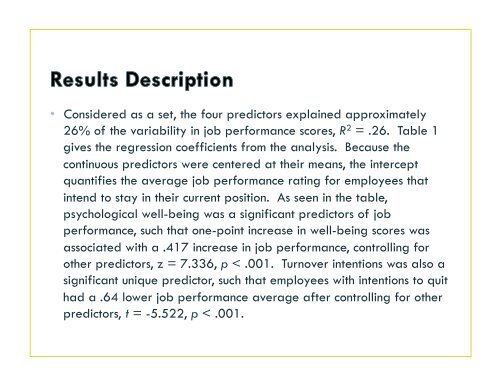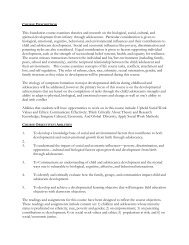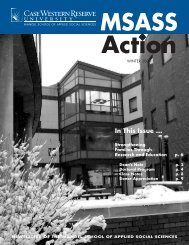Multiple Imputation in Mplus
Multiple Imputation in Mplus
Multiple Imputation in Mplus
Create successful ePaper yourself
Turn your PDF publications into a flip-book with our unique Google optimized e-Paper software.
• Considered as a set, the four predictors expla<strong>in</strong>ed approximately<br />
26% of the variability <strong>in</strong> job performance scores, R 2 = .26. Table 1<br />
gives the regression coefficients from the analysis. Because the<br />
cont<strong>in</strong>uous predictors were centered at their means, the <strong>in</strong>tercept<br />
quantifies the average job performance rat<strong>in</strong>g for employees that<br />
<strong>in</strong>tend to stay <strong>in</strong> their current position. As seen <strong>in</strong> the table,<br />
psychological well-be<strong>in</strong>g was a significant predictors of job<br />
performance, such that one-po<strong>in</strong>t <strong>in</strong>crease <strong>in</strong> well-be<strong>in</strong>g scores was<br />
associated with a .417 <strong>in</strong>crease <strong>in</strong> job performance, controll<strong>in</strong>g for<br />
other predictors, z = 7.336, p < .001. Turnover <strong>in</strong>tentions was also a<br />
significant unique predictor, such that employees with <strong>in</strong>tentions to quit<br />
had a .64 lower job performance average after controll<strong>in</strong>g for other<br />
predictors, t = -5.522, p < .001.
















